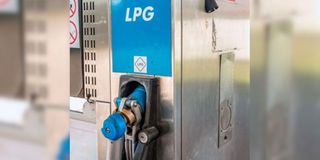Pros and cons of converting petrol-powered car to run on LPG

Converting a petrol engine to use LPG or dual-fuel is a well-established, relatively simple and relatively inexpensive process.
Gavin,
Thank you for your informative column. I am thinking of converting my Toyata Vitz to start using LPG. What are the pros and cons of the conversion?
Jane
I addressed this issue a few months ago, so here is a very brief summary of the keynotes: Converting a petrol engine to use LPG or dual-fuel is a well-established, relatively simple and relatively inexpensive process. It has been done in many parts of the world for many decades.
In many instances it reduces fuel consumption and generates less toxic exhaust gas, but performance declines and valve wear increases. It is worth considering if you are based near a convenient refuelling point and do high mileages in mostly city traffic conditions, for instance taxi work. For ordinary mixed motoring, if your motive is to be “green” then give it a try. If your priority is running costs, don’t expect a miracle.
Significantly, LPG and dual fuel have not been offered by major manufacturers and have never captured and retained a significant market share. They are even less likely to do so now with the advent of EV and hybrid vehicles, which are offered by all manufacturers and will eventually achieve market dominance.
*********

The motorist who drives 15,000kms a year now will be behind the wheel for between 500 and 750 hours.
Traffic congestion and time behind the wheel
Gavin,
Please help my three friends and I resolve an argument: how many hours does a regular motorist spend driving each year?
Peterson
The answer obviously varies (a lot) between individual motorists, in the overall distances they travel, the predominant conditions they motor in, and the ambient speeds they try to achieve. But a meaningful perspective can be estimated…and it might surprise you.
Thirty years ago, most cars used in a broad mix of conditions from city traffic to open-road cruising over long distances had an overall “average moving speed” of between 50kph and 60kph. And if they drove 15,000kms per year at that average, they would be behind the wheel for between 250 and 300 “moving” hours.
Today, the average mixed-use speed is between 25 and 30kph, not only or mainly because of higher traffic densities (the vehicle population has quadrupled), but because instead of flowing like a fuller conveyor belt, it becomes appallingly stop-start congested. The primary causes of that are very slow vehicles and speed bumps.
The motorist who drives 15,000kms a year now will be behind the wheel for between 500 and 750 hours.
Those figures are more consistent across a wide range of users than you might expect, because if more of your motoring is on open roads at higher speeds you will tend to cover more distance, and vice versa if most of your motoring is commuting in traffic, where a lesser distance takes more time.
While your question is mainly a matter of curiosity, analysis reveals an underlying issue which is arguably the single most important factor in Kenya’s motoring and road transport today: although we have newer and potentially swifter cars than we had a few decades ago, and although we have more tarmac highways and dual carriageways than ever before, our overall average speeds are lower than they use to be. Much lower. In many instances, commuter and inter-city journey times have not just marginally increased, they have doubled.
Yes, the number of vehicles has increased enormously since the 1990s – from less than half-a-million to more than 2 million. A quadrupling at that rate that would traumatise any road transport system.
Higher vehicle numbers mean higher traffic density, and to cope with that, any system would need not only more roads, but even more importantly, better flows. Traffic is safest, swiftest, most fuel-efficient and creates least wear-and-tear if it moves like a conveyor belt and at a steady and reasonable speed.
Anything that obstructs or conflicts with that principle is an anathema to every aspect of motoring, hence every objective of road transport, which impacts everything! But to achieve “best practice”, everyone has to know and accept and support the flow principle – planners, policy makers, law enforcers, standards agencies, road makers, road markers, all vehicle buyers, and road users and road neighbours.
I do not for one moment suggest we all start racing around like go-faster cowboys. Our maximum speed limit is fine, and even if we reduced it, we could get to our destinations at a reasonable (twice the current) average speed – if everybody maintained that speed.
The problem is not especially fast vehicles, it is especially slow ones (and speed bumps) that cause massive tailbacks and dangerous dodgems. The problem is not just a higher number of vehicles, it is a higher number that each spend twice as long as they should on every journey. Doubling the time doubles the density, whatever the number. What thought process thinks that the best solution to a problem is to make it twice as bad?
***
Do you have a motoring question? Email [email protected]





